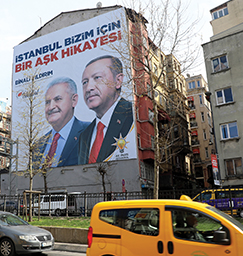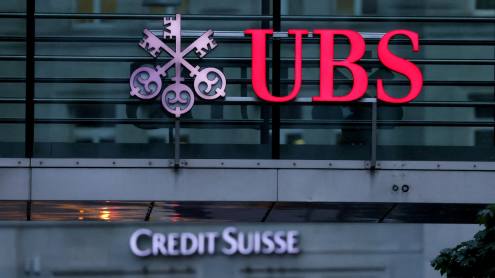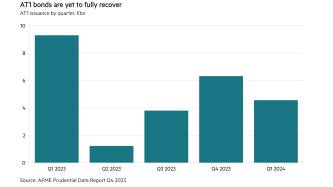Turkey’s minister of finance, Berat Albayrak, arrived at the World Economic Forum in Davos in January 2019 with a message of assurance. While acknowledging there were “lots of uncertainties” around the Turkish economy, Mr Albayrak maintained that everything was going according to plan, saying: “Currently we don’t see any recession, there is no minus growth… so far, so good.”
Less than two months later, on March 11, the government’s statistical institute’s data showed Turkey had entered a recession in the second half of 2018. Since then, the country’s policy-makers have been in damage control mode. Mr Albayrak, who is president Recep Tayyip Erdogan’s son-in-law, is attempting both to see off speculation about deeper structural problems and produce a rapid recovery.
Tough job
It is an uphill battle. In the first eight months of 2018, the Turkish lira fell 40% against the US dollar when a dispute over a US pastor detained in Turkey spilled over between Mr Erdogan and US president Donald Trump. Meanwhile, excessive lending prompted by a government-backed credit guarantee scheme led inflation to rise to nearly 30%. Mr Erdogan’s unorthodox monetary policy views meant Turkey’s central bank was slow to raise interest rates, damaging market confidence.
By the time the central bank did act, raising interest rates to 24%, investor sentiment had shifted at a time when important sectors, such as tourism, were already struggling. On March 15, official data showed unemployment had risen to 13.5%, the highest level since the global financial crisis.
Turkey’s government will be looking to emulate the country’s past experiences with economic crises, where V-shaped recoveries have been common, according to Çaglan Mursaloglu, assistant general manager at İş Yatırım, the investment arm of Türkiye İş Bankası. “Turkey has never been a safe haven of economic stability but we have always managed through the storm,” she says. “Turkey always pulls a different rabbit out of the hat in every economic crisis.”
In all likelihood, the effects of the currency shock will ripple through the first half of 2019, extending the recession. However, Ms Mursaloglu says the leading indicators suggest the worst may be over, which would lead to a gradual recovery in the second half of the year.
Mr Erdogan and Mr Albayrak took measures ahead of local elections held at the end of March to support the economy and control inflation. The government extended tax cuts on cars, housing and furniture. It also subsidised food at local government-run stalls across the major cities. These policies may bring inflation rates down to 16% by the end of 2019, according to İş Yatırım.
Changing course
Reviving the Turkish economy may require a slight change of course, according to Defne Arslan, director of the Turkey programme at the Atlantic Council and former chief economist for Turkey at the US State Department. “The Turkish government has long been using the construction sector as a measuring stick in a drive to modernise the economy, but we know that is not sustainable any more,” says Ms Arslan.
Since its rise to power in the early 2000s, Mr Erdogan’s Justice and Development Party has led a series of prestigious infrastructure and construction projects, including bridges, tunnels, the €1bn Ankara City Hospital, and a sprawling new airport in Istanbul.
“A pause on these mega-projects may be in the works until the economy bounces back and corporate debt levels come down,” says Ms Arslan. “I don’t see how they can continue on this tack at present.”
The share of the construction sector in the Turkish economy is as high as 30% according to some estimates, making it difficult for the authorities to recast in a different direction in the short term.
The government wants Turkey’s banks to increase lending to push the country through the slump, and has pressured state-owned lenders to pick up the slack. However industrial production has been falling sharply. On March 20, the country’s Automotive Manufacturers Association announced production had declined by 15.5% in a year, while overall industrial production is believed to have fallen by 7.3%.
Employment levels have also suffered. While the official rate of 13.5% is high, Ms Arslan says non-agricultural employment is even higher, and youth unemployment has approached 23%.
Slowed recovery
As Turkish corporates have accumulated large debt burdens, a period of deleveraging that would slow the pace of any recovery is likely, says Inan Demir, head of Europe, Middle East and Africa economics at Nomura. Mr Demir expects negative year-on-year growth rates to continue into the first half of the year with room for positive growth rates to return in the second half of 2019, which would mean an overall negative growth rate for the year.
“This would be in contrast to Turkey’s past V-shaped recoveries, but the fact that external debt and banking sector assets to gross domestic product are much higher than in past exchange rate shocks raises the risk of debt overhang this time,” says Mr Demir.
Hopes for a reduction in unemployment levels will rely on public sector employment and labour-heavy services sectors, especially tourism, he adds.
When the Turkish government introduced a stimulus programme in 2017 designed around a credit guarantee scheme that saw the Treasury back bank lending, analysts noted that the scheme was exacerbating imbalances and widening the current account deficit, according to Mr Demir. “The 2017 stimulus programme is unlikely to emerge in a favourable light from this episode,” he says.
Large forex loans
The backbone of Mr Erdogan’s economic policy has been to develop the construction, transport and energy sectors with government credit guarantees, says Fikret Adaman, professor of economics at Istanbul’s Bogaziçi University. He says this model encouraged Turkish corporates to take on large foreign currency loans at an unsustainable rate. “The overstretched credit-led growth strategy was destined to face difficulties – as many correctly predicted,” says Mr Adaman.
Mr Erdogan’s government hopes the contraction will be short-lived. An improved appetite for emerging markets following the US Federal Reserve decision to put interest rate rises on hold may also help Turkey out of the rut. This would allow Turkey to return to its construction-led agenda, and to the prestige projects cast by Mr Erdogan and his supporters as historic development achievements.
However, the imbalances produced by Turkey’s approach have not been addressed, according to Mr Adaman. “It has become difficult for corporates to raise additional capital inflows for new production and investment and to roll over debt. The effects of rising foreign debt have taken hold. That makes a recovery more difficult, especially as investor sentiment has worsened,” he says.












